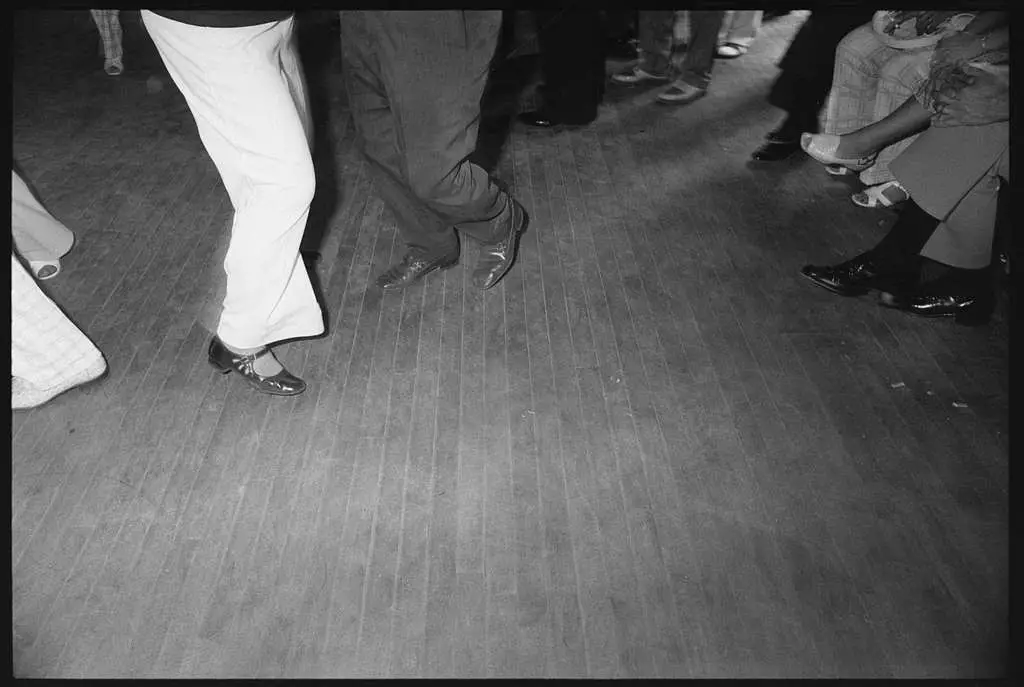Should You Wear An Ankle Support For A Sprained Ankle

The ankle is one of the most important joints in the body and it is essential to maintain its health. When you sprain your ankle, it can be painful and difficult to move. Wearing an ankle support can help reduce pain and inflammation, as well as provide stability and protection while you heal. This article will discuss the benefits of wearing an ankle support for a sprained ankle, and provide tips on how to choose the right one for you.A sprained ankle is an injury to one or more ligaments in the ankle, usually caused by an unnatural twisting or force on the joint. It is common in sports and can range from mild to severe. Symptoms include pain, swelling, bruising, difficulty walking and instability of the joint. Treatment often involves rest, ice, compression and elevation of the ankle, along with anti-inflammatory medications to reduce swelling. In severe cases, surgery may be necessary.
What Are the Symptoms of a Sprained Ankle?
The most common symptom of a sprained ankle is pain, which may range from mild to severe depending on the severity of the sprain. Other symptoms include swelling, discoloration of the skin around the ankle, tenderness and stiffness in the joint. The individual may also experience difficulty walking or bearing weight on the affected foot. In some cases, there may be a popping or tearing sound at the time of injury. Bruising may also appear if there is significant trauma to the area. If any of these symptoms are present, it is important to seek medical attention in order to prevent further damage and ensure proper healing.
It is important to note that a sprained ankle can sometimes be confused with a fracture or broken bone. If there is severe pain and swelling that does not improve with rest and ice, it may be necessary to have an x-ray performed in order to determine if there is a more serious injury present. If this is suspected, it is important to seek medical attention right away in order to get proper treatment and avoid complications.
What is an Ankle Support?
An ankle support is a device or garment designed to provide support and stability to the ankle joint while allowing the foot to move normally. It is often used to treat a variety of ankle injuries, including sprains, strains, and tendonitis. Ankle supports are usually made from lightweight, breathable materials such as neoprene or spandex, and some models may also feature adjustable straps for extra support. They can also provide compression and warmth to the affected area, which can help reduce pain and swelling. When used properly, ankle supports can help prevent future injury and promote healing.
Benefits of Wearing an Ankle Support
Ankle supports are an important part of injury prevention and rehabilitation for athletes and non-athletes alike. They provide support to the ankle joint, helping to reduce pain and swelling caused by sprains, strains, and overuse injuries. Wearing an ankle support can help you stay active longer and reduce your risk of further injury. Here are some of the benefits of wearing an ankle support:
1. Improved Stability: An ankle support provides extra stability to the ankle joint, helping to prevent sprains and strains caused by sudden movements or twisting of the foot. The extra stability allows you to move more freely without putting too much stress on your ankles.
2. Pain Relief: An ankle support helps to reduce pain associated with minor sprains, strains, and overuse injuries. The support helps to evenly distribute pressure around the ankle joint, which can help reduce inflammation and pain.
3. Improved Mobility: An ankle support can help improve mobility in the affected area by providing extra stability while you move. This allows you to perform activities with less risk of further injury.
4. Faster Recovery Time: Wearing an ankle support can help reduce recovery time for minor injuries such as sprains or strains. The extra stability provided by the brace helps to alleviate stress on the affected area, allowing it to heal faster.
Ankle supports are a great way to protect your ankles from injuries and improve your mobility during physical activity. They provide extra stability for activities like running or playing sports, while also helping to reduce pain and inflammation associated with minor injuries or overuse. Whether you’re a professional athlete or just looking for a bit more security during physical activity, wearing an ankle brace is a great way to keep your ankles healthy and active for longer periods of time.
Types of Ankle Support
Ankle support is often used to help stabilize the ankle joint and reduce the risk of injury. It can be used to treat a variety of conditions, including sprains, strains, tendinitis, and arthritis. There are several types of ankle support available, depending on the condition being treated and the level of support needed.
Taping is one of the most common forms of ankle support. It involves wrapping a tape or elastic bandage around the foot and ankle in a figure-of-eight motion to provide stability and help limit movement. Tape also helps reduce swelling by providing compression to the affected area.
Stabilizing braces or splints are another form of ankle support that can be used to treat ligament injuries or chronic conditions such as tendinitis or arthritis. Braces provide more stability than tape but less mobility. They come in a variety of shapes and sizes and can be custom-fitted for an individual’s needs.
Ankle supports can also be used to reduce pain associated with chronic conditions such as plantar fasciitis or Achilles tendonitis. These supports typically use an adjustable strap system that wraps around the foot and ankle to provide compression and stability while allowing for some range of motion. They are often made from lightweight materials such as neoprene or nylon that are comfortable against the skin while still providing adequate support.
In addition, there are orthotic devices that can be used for more severe injuries or chronic conditions. These devices are custom-made to fit an individual’s foot and ankle structure and provide greater stability than taping or braces alone. Orthotics come in many different forms, including rigid foot plates, heel cups, arch supports, wedge inserts, and more.
No matter what type of ankle support is chosen, it is important that it fits properly and provides adequate support without restricting movement too much. An improperly fitted brace or orthotic device may cause discomfort or even further injury if not worn correctly. Consulting with a physiotherapist before starting any type of ankle support is always recommended in order to ensure proper fitment and effective treatment for any condition.

Choosing the Right Ankle Support
Ankle support can be an important part of managing and preventing ankle injuries. A good ankle support can provide stability and help reduce the risk of further injury. However, with so many different types of ankle supports available, it can be difficult to know which one is best for you. Here are some tips to help you choose the right ankle support for your needs.
First, consider the type of activity or injury you are trying to protect against. Different types of supports are designed to provide protection and stability for different activities or injuries. For example, if you are dealing with a sprained ankle, you may want to look into a compression sleeve or brace that provides support and stability while allowing some mobility. On the other hand, if you are playing a sport or engaging in physical activity that puts your ankles at risk for injury, you may want to look into a more supportive brace or wrap that provides more stability and protection.
Next, consider the material of the support. Different materials provide different levels of protection, comfort, and breathability. For example, neoprene is a popular material used in braces because it is lightweight and breathable while still providing firm support. Alternatively, elastic wraps may be more comfortable but may not provide as much stability as neoprene braces. Consider the material carefully before making your purchase.
Finally, make sure the ankle support fits properly before using it. A brace or wrap that is too loose may not provide enough protection or stability while one that is too tight can cause discomfort and limit mobility. Look for adjustable fastenings such as straps or Velcro closures when purchasing an ankle support to ensure it fits properly.
By following these tips when choosing an ankle support, you can ensure that you get the right one for your needs and activities. With proper care and use, an ankle brace or wrap can provide much needed stability and protection from further injury.
What is an Ankle Support?
An ankle support is a type of brace or wrap designed to provide stability and support to the ankle joint. It is usually made of fabric or elastic and is used to reduce pain and swelling in the ankle after injury, strain, or overuse. The support can also be used for preventative purposes, to help protect against further injury.
Types of Ankle Supports
There are several different types of ankle supports available on the market today, including neoprene wraps, elastic bandages, lace-up braces, and compression sleeves. Each type provides different levels of support and protection depending on the severity of the injury. Your doctor or physical therapist can help you determine which type of support is best for your needs.
How to Wear an Ankle Support
When wearing an ankle support, it is important to make sure that it fits properly and securely. Start by wrapping the support around your ankle in a spiral motion from the bottom up. Make sure that the material does not become too tight as this can cause further discomfort. Once you have secured the ankle wrap in place, use a tape measure or ruler to ensure that it fits snugly but not too tightly. Finally, secure any straps or fasteners that come with the wrap so that it stays firmly in place throughout your activities.
When to Wear an Ankle Support
Ankle supports, also known as ankle braces, are designed to help reduce the risk of injury to the ankle joint. They provide extra stability and support for the ankle by limiting its range of motion. But when should you wear an ankle support? To answer this question, it’s important to understand the types of activities and situations that could benefit from wearing an ankle support.
For athletes, it’s a good idea to wear an ankle support when engaging in activities that involve quick movements or changes in direction. This could include sports such as basketball, tennis, or soccer. An ankle support can help reduce the risk of sprains and other injuries by providing additional stability while playing.
It’s also a good idea to wear an ankle support if you have a history of ankle injuries or if your ankles are particularly weak or unstable. Wearing an ankle brace can help reduce the chances of re-injury by providing additional stability and support for the joint.
In addition, people with certain medical conditions such as arthritis or tendonitis may find it beneficial to wear an ankle brace in order to reduce pain and irritation while walking or exercising. Ankle supports can also be helpful for people who are recovering from recent surgery on their ankles or who are rehabilitating from a previous injury.
Overall, wearing an ankle support can be beneficial for athletes engaging in high-impact activities as well as those with weaker ankles or existing medical conditions that affect the joints. It’s important to consult with your doctor before wearing a brace in order to ensure it is right for your individual needs.

Conclusion
Wearing an ankle support for a sprained ankle is highly recommended. It provides the necessary compression and support while promoting healing and preventing further injury. Not only does it reduce pain but also helps to restore full mobility and flexibility. In addition, wearing an ankle support helps reduce the risk of re-injury, which can cause more serious long-term damage. The benefits of wearing an ankle support far outweigh the risks, so it’s definitely worth considering if you have a sprained ankle.
It’s important to remember that each person’s injury is unique and will require different levels of care and support. If you’re unsure about which type of ankle brace to purchase or whether or not you should wear one at all, it’s best to consult with a doctor or physical therapist who can provide personalized advice on what would be best for your particular situation.
In conclusion, wearing an ankle support for a sprained ankle is something that should be seriously considered. Not only will it help reduce pain and promote healing but also can help prevent further injury in the long run. With the wide range of options available today, there is sure to be an ankle brace that fits your specific needs perfectly.
